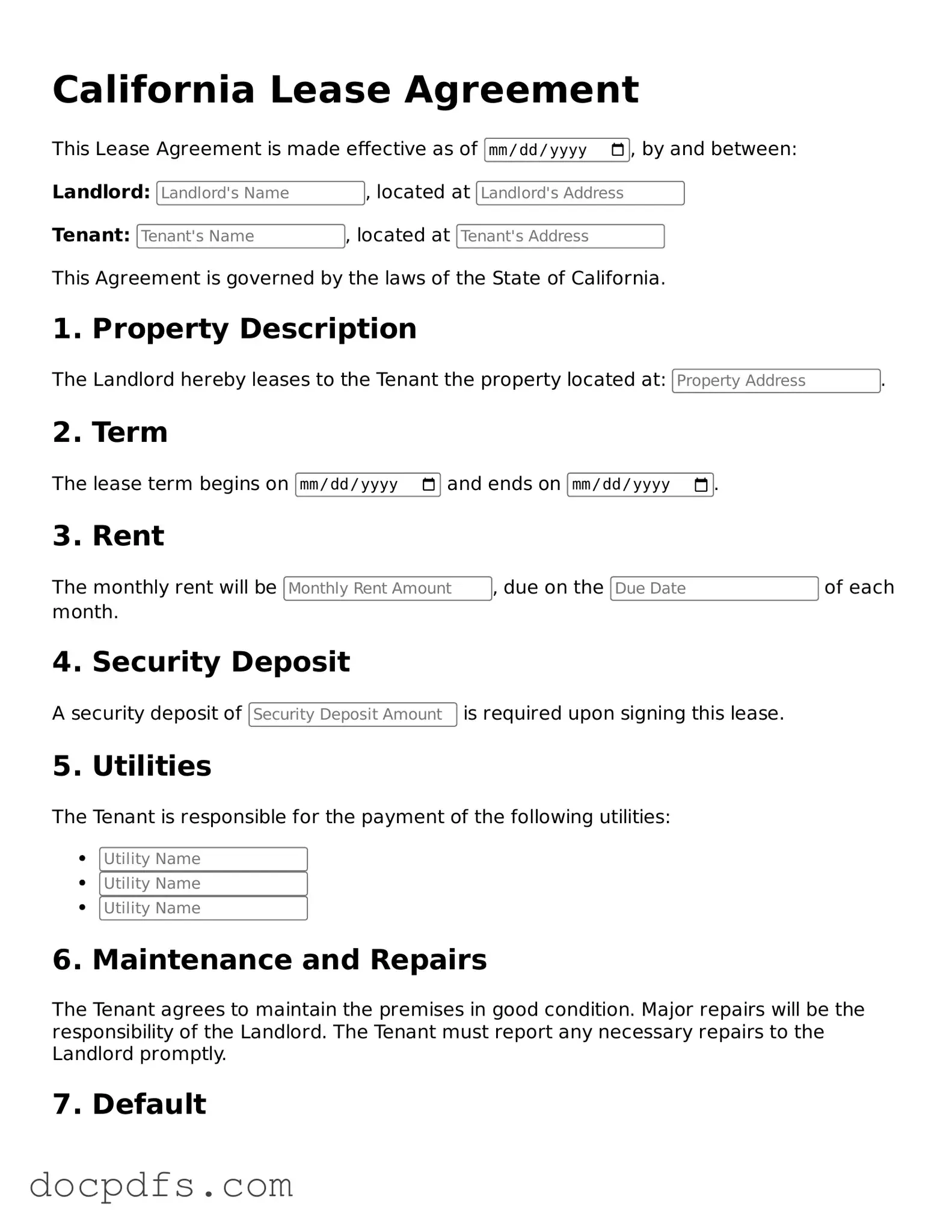What is a California Lease Agreement?
A California Lease Agreement is a legal document that outlines the terms and conditions under which a landlord rents property to a tenant in California. It includes details such as the rental amount, duration of the lease, responsibilities of both parties, and any specific rules regarding the property. This agreement is essential for establishing clear expectations and protecting the rights of both landlords and tenants.
What key components should be included in the lease?
Several important elements should be present in a California Lease Agreement:
-
Parties Involved:
Clearly identify the landlord and tenant.
-
Property Description:
Provide a detailed description of the rental property, including the address.
-
Lease Term:
Specify the duration of the lease, whether it is a fixed-term lease or month-to-month.
-
Rent Amount:
State the monthly rent and payment due date.
-
Security Deposit:
Outline the amount of the security deposit and the conditions for its return.
-
Maintenance Responsibilities:
Define who is responsible for repairs and maintenance.
How does a tenant terminate a lease in California?
To terminate a lease in California, a tenant must provide written notice to the landlord. The notice period typically depends on the lease type:
-
For month-to-month leases, a 30-day notice is generally required.
-
For fixed-term leases, the tenant must wait until the lease expires unless there are legally acceptable reasons for early termination, such as domestic violence or uninhabitable conditions.
It is advisable for tenants to check their lease for any specific termination clauses and to document the notice provided.
What happens if a tenant fails to pay rent?
If a tenant fails to pay rent, the landlord has the right to initiate eviction proceedings. Before doing so, the landlord must typically provide a written notice, often referred to as a "pay or quit" notice, giving the tenant a specific timeframe to pay the overdue rent. If the tenant does not comply, the landlord may file an unlawful detainer lawsuit in court to seek possession of the property.
Are there any restrictions on security deposits in California?
Yes, California law imposes restrictions on security deposits. A landlord can charge a maximum of:
-
Two months' rent for an unfurnished unit
-
Three months' rent for a furnished unit
The landlord must also return the security deposit within 21 days after the tenant vacates the property, minus any deductions for repairs or unpaid rent, accompanied by an itemized statement.
Can a lease agreement be modified after it is signed?
Yes, a lease agreement can be modified after it is signed, but both parties must agree to the changes. Any modifications should be documented in writing and signed by both the landlord and the tenant to ensure clarity and enforceability. Verbal agreements regarding changes are generally not advisable, as they can lead to misunderstandings.
